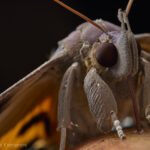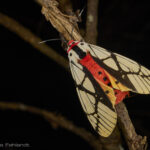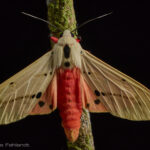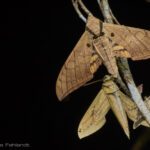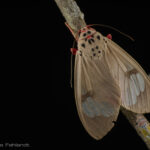Picasso moth, Baorisa hieroglyphica Moore, 1882 – Sarawak / Borneo – around 1100m ASL
The Picasso moth (B. hieroglyphica), is a nocturnal lepidopteran of the family Erebidae, first described by Frederic Moore in 1882. With a wingspan of approximately 50 mm, it is notable for its highly distinctive coloration: white forewings patterned with contrasting black streaks, orange bands, and yellow-brown patches. These vivid, seemingly abstract markings have inspired the vernacular name, which alludes to the modernist aesthetics of Pablo Picasso. The species occurs in northeastern India and parts of Southeast Asia, but is only rarely documented. Its apparent scarcity likely reflects both limited field observations and unresolved ecological traits. To date, information on larval host plants and life history remains incomplete, making B. hieroglyphica a representative case of the broader knowledge gaps in tropical moth diversity.
